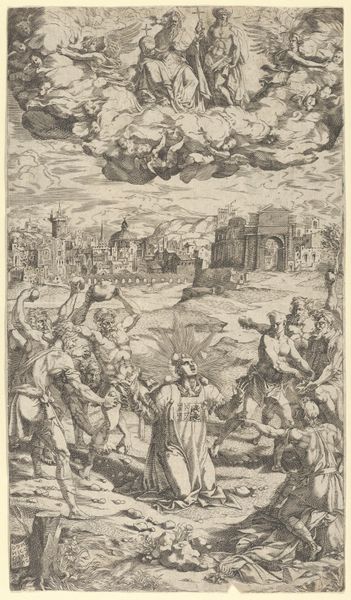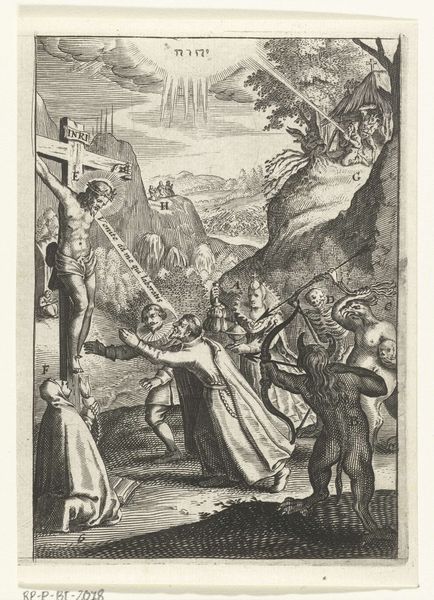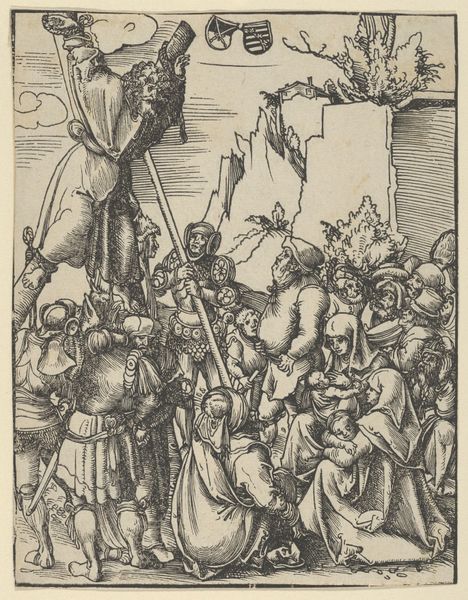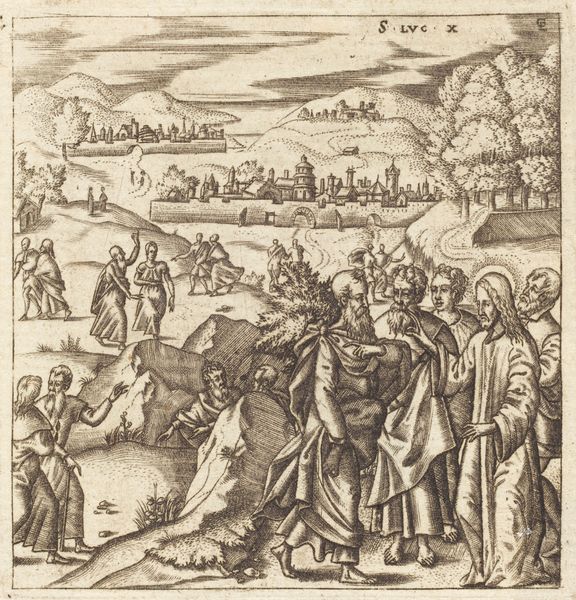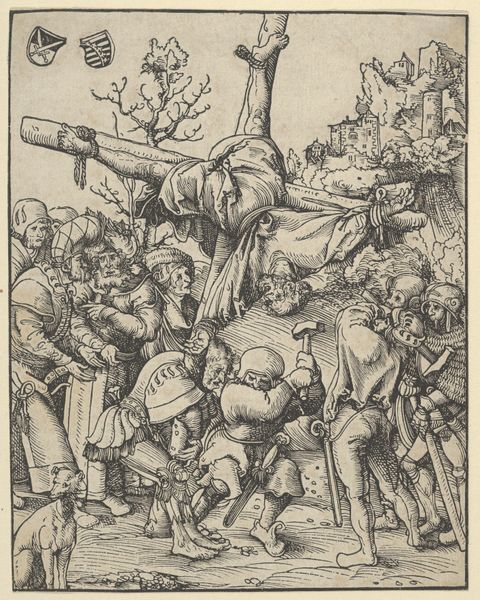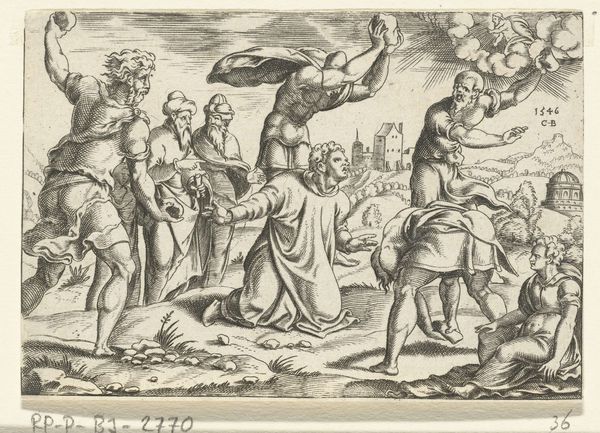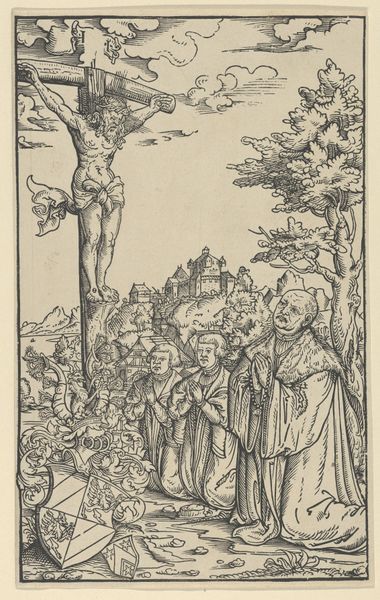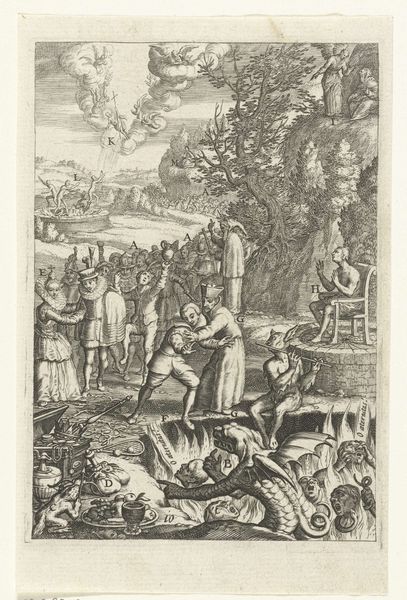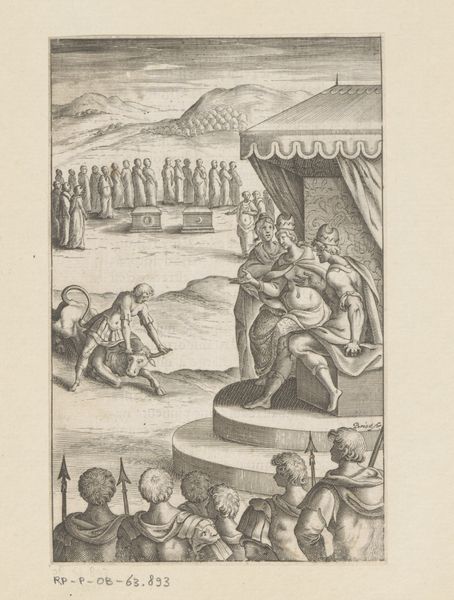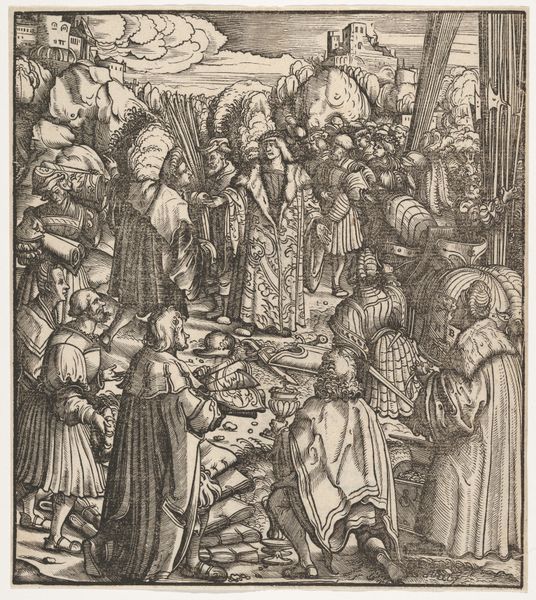
The Triumph of Love, from "The Triumphs of Petrarch" 1480 - 1500
0:00
0:00
drawing, print, engraving
#
drawing
#
allegory
# print
#
landscape
#
figuration
#
cupid
#
history-painting
#
italian-renaissance
#
engraving
Dimensions: sheet: 10 5/16 x 6 3/4 in. (26.2 x 17.2 cm)
Copyright: Public Domain
Curator: Here we have Francesco Rosselli's "The Triumph of Love, from 'The Triumphs of Petrarch'," a work dating from around 1480 to 1500. It's currently held in the collection of the Metropolitan Museum of Art. What are your initial thoughts? Editor: It's… intense! So much is happening, and the cupid figure hovering above that fountain thing looks incredibly smug. It evokes this feeling of both celebratory procession, yet forced obligation, which speaks volumes about love and power. Curator: It's an engraving, so the detail is impressive, given the medium. This work visually represents Petrarch's allegorical poem where Love is presented as a powerful force, a kind of ruler in a symbolic parade. The artist is visualizing Petrarch's narrative for a wider audience. Editor: And what a narrative! It makes you consider: who benefits from this triumph? Look at the figures—they are part of love’s parade, literally chained to its progress. Are they willing participants or symbols of love's coercive influence over societal structures? It's interesting that Rosselli makes us think of love as political. Curator: Precisely! You touch on how Rosselli situates Petrarch’s allegorical poem, within the sociopolitical structures of the Italian Renaissance. This piece participates in discussions around social hierarchies and what these hierarchies demand from different subject positions, in this case lovers. It is a visualization of political authority made accessible for a broad audience. Editor: What’s equally interesting is where it ends up hanging. Putting this piece on display in a modern museum challenges its own initial message. To look at these images is to reconsider all triumphal art and what authority it represents in the current socio-political climate. Curator: Thinking about its public role within the contemporary institution challenges us to examine these works through a critical lens. Editor: I agree completely. Ultimately, what’s so compelling about Rosselli’s piece is how it sparks critical dialogue around representations of love, power, and authority that speak to contemporary conversations.
Comments
No comments
Be the first to comment and join the conversation on the ultimate creative platform.


